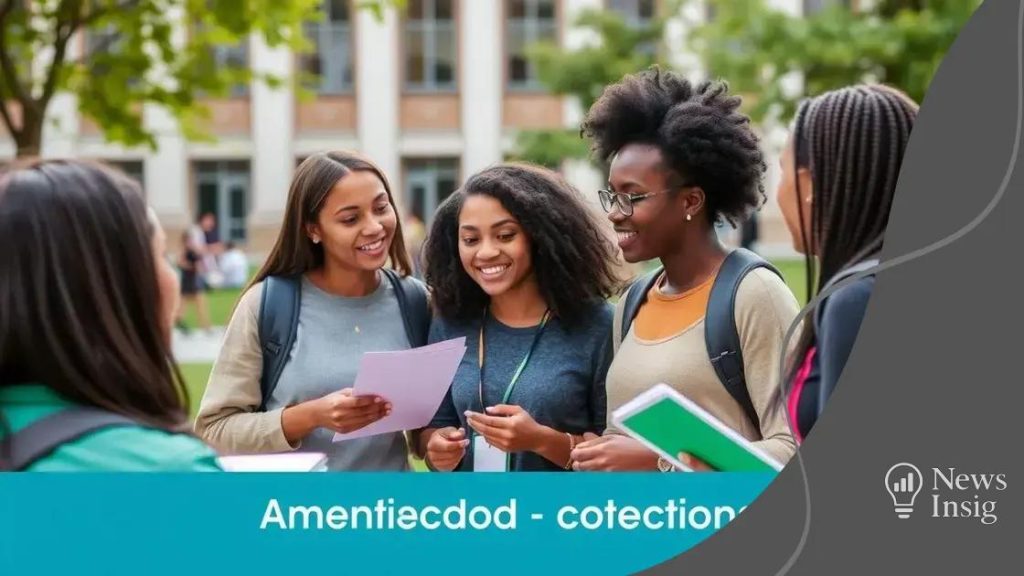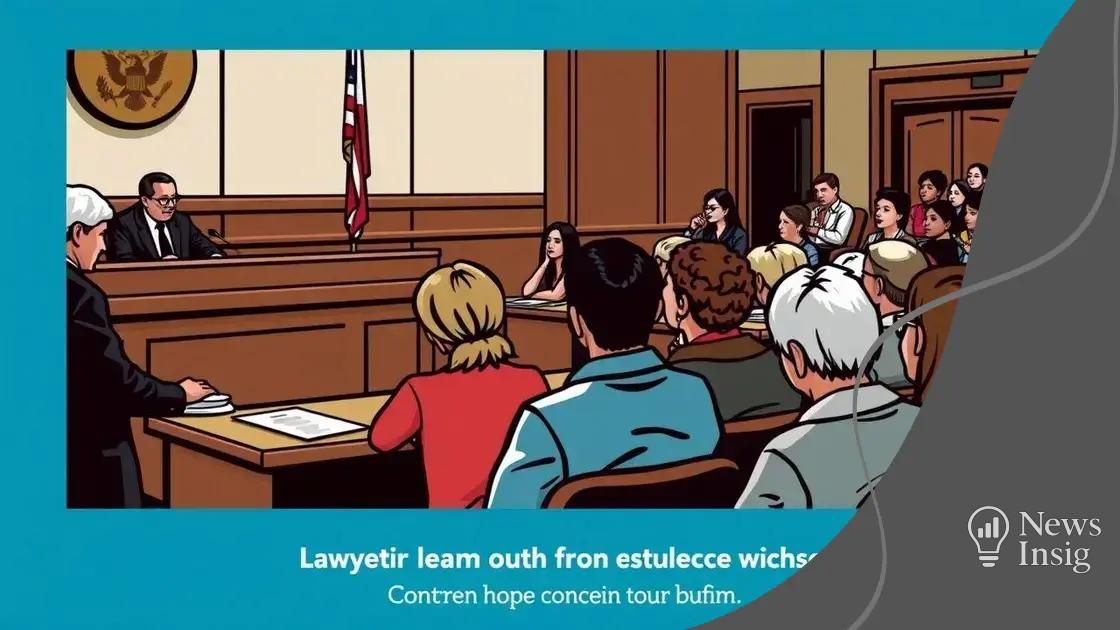Recent news regarding student loan forgiveness: what to know

Anúncios
Recent news regarding student loan forgiveness highlights significant changes, including expanded eligibility and new application processes, empowering borrowers to navigate their debt more effectively.
Recent news regarding student loan forgiveness has created a buzz among borrowers. As new developments unfold, it’s crucial to stay informed about what these changes mean for your financial future. Let’s dive into the latest updates.
Anúncios
Overview of student loan forgiveness programs
Student loan forgiveness programs have become a focal point for many borrowers seeking relief from their educational debt. These programs aim to reduce or eliminate loan obligations for qualifying individuals, making higher education more accessible and affordable.
What Are the Major Programs?
There are several types of forgiveness programs tailored to different professions and circumstances. Many borrowers may benefit from these initiatives:
- Public Service Loan Forgiveness (PSLF): For individuals working in government or non-profit sectors, after making 120 qualifying payments.
- Teacher Loan Forgiveness: Available for teachers who work in low-income schools for a specified period.
- Income-Driven Repayment Forgiveness: After 20 or 25 years of qualifying payments under certain repayment plans.
- Military Service Forgiveness: For veterans and active-duty service members, often with specific eligibility criteria.
Anúncios
Each program has unique requirements. It’s crucial to understand these details to determine which option best suits your needs.
How to Determine Eligibility
Determining eligibility for student loan forgiveness is straightforward but requires careful examination. First, identify the type of loans you have—federal loans typically qualify for these programs. Then, review the specific requirements for the program you are interested in. Commonly, borrowers must meet criteria related to their employment, income level, and repayment history.
Utilizing available resources can be beneficial. The Department of Education’s website offers comprehensive guides on each program, including eligibility checkers. Additionally, consulting with a financial advisor or a student loan counselor can provide personalized insights into your situation.
In recent years, changes to legislation and policy have increased the number of applicants eligible for forgiveness. Staying updated on news regarding student loan forgiveness is essential to take advantage of these opportunities.
Key changes in student loan policies
Recent updates regarding student loan policies have created significant changes for borrowers. Understanding these key changes is essential for anyone with student loans, especially in light of the ongoing economic shifts.
Notable Policy Changes
One major change is the shift in eligibility for loan forgiveness. Many borrowers are finding that new regulations allow them to qualify for forgiveness sooner than expected. Along with the adaptations to existing programs, new initiatives are emerging regularly.
- Increased access: Policies now allow more borrowers, including those with older loans, to apply for forgiveness.
- Modification of repayment plans: Some income-driven repayment plans have been adjusted to make payments more manageable.
- Temporary relief measures: During economic crises, temporary pauses on payments or interest have become more common.
- Improved processes: Streamlined application processes for borrowers seeking forgiveness have been implemented.
Another important update includes the extension of the federal student loan payment freeze. This allows borrowers more time to reassess their financial situations without the immediate pressure of repayments. Furthermore, many states are enacting their own policies to provide additional support to student loan holders.
These developments emphasize the need for borrowers to remain informed. With the frequency of updates in student loan policies, following reputable news sources and official announcements is critical to understanding how these changes may apply to one’s individual circumstances. By staying engaged with current news, borrowers can take advantage of available options and maximize their benefits.
Impact of recent court rulings on forgiveness

Recent court rulings have significantly influenced the landscape of student loan forgiveness. These legal decisions impact borrowers’ rights and the future of forgiveness programs.
Key Rulings
Several important cases have shaped the current understanding of student loan forgiveness. Courts have addressed issues ranging from eligibility criteria to the enforcement of forgiveness policies.
- Expansion of Criteria: Some rulings have determined that specific groups of borrowers should be included in forgiveness plans, increasing opportunities for debt relief.
- Challenges to Policy Changes: Legal challenges have arisen against new policy implementations, questioning their fairness and effectiveness.
- Protection for Borrowers: Courts have upheld protections for borrowers, ensuring they are not misled about their qualifications for forgiveness.
- Impact on Federal Programs: Decisions impacting federal programs may result in alterations or extensions of current forgiveness initiatives.
These court actions highlight the ongoing struggles and victories for borrowers navigating the complexities of student debt relief. As changes unfold, borrowers are encouraged to stay informed about how these rulings might affect their eligibility and options.
The interplay between courts and the government emphasizes the importance of advocacy and awareness within the student loan community. Following updates from reliable sources can help borrowers understand their rights and opportunities.
How to apply for loan forgiveness
Understanding how to apply for loan forgiveness is essential for borrowers seeking relief from their student loans. The application process can seem daunting, but breaking it down can make it more manageable.
Steps to Apply
First, determine which type of forgiveness program fits your situation. There are various programs, and knowing the right one can streamline your application process. Here are some essential steps to follow:
- Gather Documentation: Collect your loan information, employment records, and proof of income. These documents will be crucial for your application.
- Submit Your Application: Most forgiveness programs require an online application. Follow the specific instructions for the program you’re applying to. Ensuring that you fill in all required fields accurately is vital.
- Stay Informed: After submitting your application, monitor its status. You may need to provide additional information if requested by the loan servicer.
- Consider Follow-Up: If you don’t receive updates in a reasonable timeframe, do not hesitate to follow up. Contact your loan servicer for updates on your application status.
Many borrowers find themselves confused about the requirements, so utilizing resources can be very helpful. The federal student aid website provides comprehensive details about each program and the application process. Additionally, talking to a student loan counselor can help clarify any uncertainties.
Remember, applying for loan forgiveness may require patience and persistence. Given the complexities of the process, being proactive and organized can lead to smoother navigation and better chances of approval.
Advice for managing student loans amidst policy shifts
Managing student loans can be challenging, especially during times of policy shifts. Staying informed and proactive is essential for navigating your financial responsibilities effectively.
Understanding Your Options
As policies change, borrowers should review their options regularly. Federal student loan programs often have provisions that can benefit borrowers. Understanding which repayment plans are available can make a significant difference.
- Explore Income-Driven Repayment Plans: These plans can adjust your monthly payments based on your income, making them more manageable.
- Consider Consolidation: Combining multiple loans into one can simplify payments and may offer lower interest rates.
- Stay Informed About Forgiveness Programs: Different forgiveness programs may apply during policy changes, allowing for potential debt relief.
- Check for Temporary Relief Options: During economic uncertainties, temporary pauses or relief measures could be available.
As policies evolve, being adaptable is crucial. Continuous education about the changes in student loan policies can empower borrowers to make the best decisions for their circumstances. Seeking advice from financial advisors or student loan counselors can also offer personalized insight.
Additionally, budgeting effectively can help you prepare for any unexpected changes. Keeping track of your expenses and prioritizing loan payments can reduce stress during policy shifts. Consider setting aside funds for emergencies to ensure you’re financially secure when fluctuations occur.
Finally, don’t hesitate to reach out to support groups or online communities for advice and encouragement. Many borrowers share valuable experiences and strategies that can help you manage your student loans more effectively amidst these changes.
In conclusion, navigating the landscape of student loan forgiveness is essential for borrowers seeking relief. It’s important to stay informed about the various programs available, including their eligibility requirements and application processes. Recent policy changes highlight the need for flexibility and adaptability, and managing your loans wisely can help reduce stress amid these shifts. By leveraging resources, seeking advice, and actively engaging in financial planning, you can better position yourself for success in managing and potentially forgiving your student loans. Remember, you are not alone in this journey; many resources and communities are available to support you.
FAQ – Frequently Asked Questions about Student Loan Forgiveness
What types of student loan forgiveness programs are available?
There are several programs, including Public Service Loan Forgiveness, Teacher Loan Forgiveness, and Income-Driven Repayment Forgiveness.
How do I know if I qualify for loan forgiveness?
Eligibility depends on factors like your loan type, payment history, and employment status. It’s important to check specific program requirements.
Can I apply for loan forgiveness online?
Yes, most forgiveness programs have online applications. Make sure to gather necessary documents before applying.
How can I stay updated on changes to student loan policies?
Follow reputable news sources and the Department of Education’s website for the latest updates on student loan policies and forgiveness programs.





